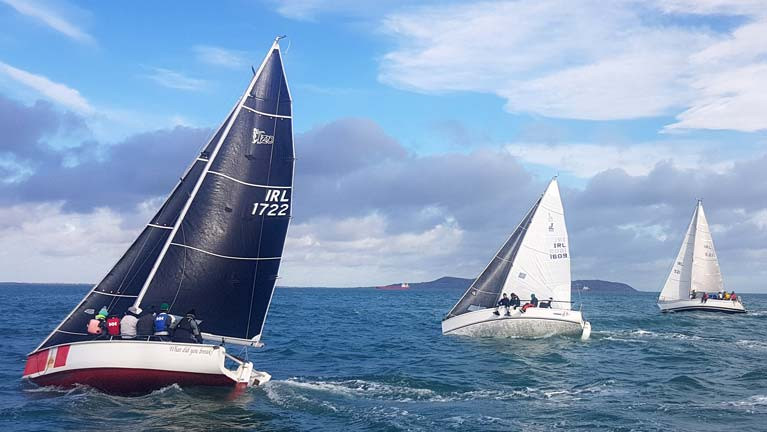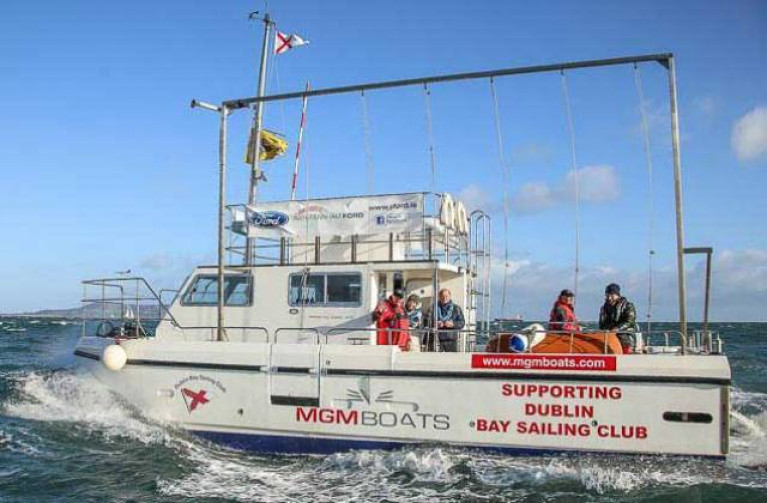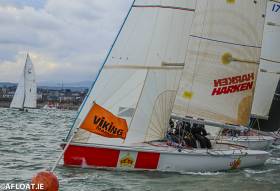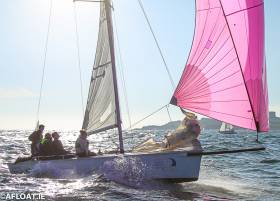Displaying items by tag: spring Chicken
50 Boats Confirmed for Sunday's DBSC Spring Chicken Series
Nine J80s will be on the line for the third start of Sunday's first race of the 2022 DBSC Spring Chicken Series.
The popular and easy to handle sportsboat makes up almost a fifth of the fleet and eclipses the 1720, another popular sportsboat type for the six-week series.
There will be five First 31.7s racing as well as four J109s. Also racing are at least two Sunfast 3600s and as regular Afloat readers will know, these Jeanneau skippers have already been out practising on the bay this month.
Racing for a mixed cruiser-racer fleet will continue each Sunday at 10.10 am until 13th March 2022 inclusive.
Download starts and handicaps below
After four races sailed of the DBSC Spring Chicken Series, the 1720 sportsboat Ricochet leads overall with one race of the series left to sail on March 22nd.
Second overall in the Citroen South sponsored fixture is the Sigma 38 State O'Chassis with third place overall taken by the J109 Dear Prudence.
As Afloat reported earlier, the fourth race on Sunday morning featured a southerly downwind course to Dalkey from Dublin Bay.
Download overall results below.
DBSC Will Make Every Effort to Sail Spring Chicken Series This Sunday
Dublin Bay Sailing Club organisers say they will be making every effort to get sailing on Sunday morning in the third race of the DBSC Spring Chicken Series despite the gale warnings issued in advance of Storm Dennis.
Start sequences for the fleet have been issued and are downloadable below.
The hope is that conditions will be like the first race of the series, 'breezy but sailable'.
If very obvious tomorrow or early Sunday, DBSC may send an email to competitors issuing a cancellation notice but otherwise, the club says it will be making every effort to sail, including going out on the Committee Boat Freebird to check conditions on Sunday morning.
Meanwhile, the DMYC has cancelled its Dinghy Frostbites scheduled for Sunday afternoon in Dun Laoghaire Harbour.
Dublin Bay Sailing Club Announce 'Spring Chicken' Series in February
Dublin Bay Sailing Club has announced its annual six races 'Spring Chicken' Series for cruisers will be held on Sunday mornings from February 2nd to March 8th.
Racing under modified ECHO. Cruisers, cruising boats, one-designs and boats that do not normally race are very welcome to compete.
The first gun is at 10.10 hrs each Sunday and the series is sponsored by Citroen South.
An entry fee of €60.00 that includes temporary membership of DBSC. and the National Yacht Club is included.
Entries can be made online at www.dbsc.ie
Sailing Instructions will be made available by the club on Sunday 2nd February and will be emailed to entrants beforehand.
After sailing, food will be available to competitors in the National Y.C.
Last date for entries – Wednesday 28th January.
With winds gusting to 40–knots from the northwest on Dublin Bay this morning, there was little prospect of a final race in the six-race DBSC Spring Chicken series, especially as a flooding tide created a rough sea state for the 40-boat fleet.
Instead, the sailors retired to the National Yacht Club for the series prizegiving where winning Irish National Sailing School (INSS) 1720 Skipper Kenny Rumball led the plaudits to Spring Chicken organiser Fintan Cairns; "This type of short sharp racing is proving really popular, so a big thanks to Fintan and his crew for continuing to organise this great format that gets so many of us out on the water through the winter".
Overall results after the five races (and one discard) sailed are in Afloat.ie's earlier post here. Final results (issued on Monday, March 11) are downloadable below.
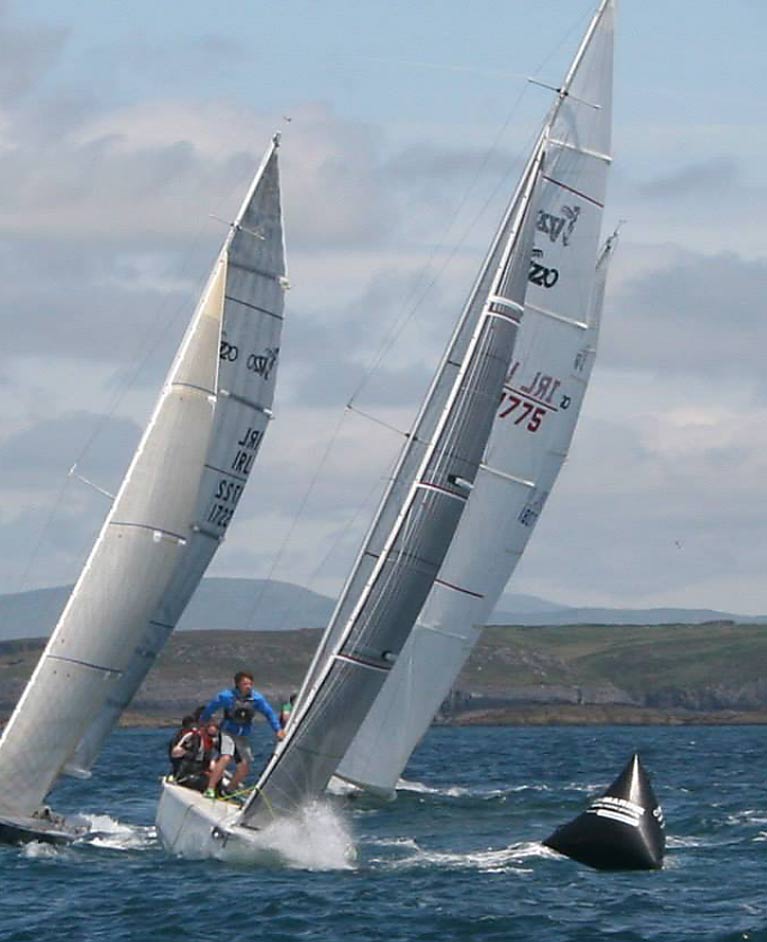 Team Irish National Sailing & Powerboat School
Team Irish National Sailing & Powerboat School
Strong Wind Forecast Threatens DBSC Spring Chicken Last Race
Forecasted strong westerly winds threaten the final race of Sunday's DBSC Spring Chicken Series on Dublin Bay.
As reported earlier, the overall lead is currently held by the Irish National Sailing School's 1720 sportsboat but race organiser Fintan Cairns says he "hopes we get racing to mix up the overalls" so anything can happen to the scoresheet if the forecasted blow does not materialise.
Handicaps and Starts for the last of the six-race series are downloadable below.
Cairns says that if sailing is cancelled the prizegiving for the Citroen South sponsored event will commence around 1230 in the National Y.C.
INSS 1720 Sportsboat Leads into DBSC 'Spring Chicken' Finale
Two 1720 sportsboats lead the DBSC Spring Chicken Series into the final round of the six-race series this Sunday.
Results published by organisers today (downloadable below) reveal the Irish National Sailing School 1720 leads overall on 25 points, some 11 points ahead of the Royal St. George's 1720 Wolfe. Third overall in the Citroen South sponsored series, after five races sailed and one discard applied, is a one-time series leader, the Sadler 32, White Knight.
With next weekend's Dublin Bay Sailing Club (DBSC) Spring Chicken Series ready to kick start the 2019 sailing season on Dublin Bay, there has been a shout out for any last minute entries.
The series follows a pre-Christmas record turnout in the club's 2018 DBSC Turkey Shoot series that attracted over 75 entries.
As previously reported by Afloat.ie, the series is six races over the next six Sunday mornings under modified ECHO. Cruisers, cruising boats, One-designs and boats that do not normally race are very welcome to join the series.
The First gun is at 10.10 hrs. The Entry fee of €60.00 includes temporary membership of Dublin Bay S.C. and hosts, the National Yacht Club.
Last year the series attracted 36 entries.
Download race documents here
1720 Sportsboats to the Fore in DBSC Spring Chicken Series on Dublin Bay
Two 1720s are being chased by an SB20 for the overall lead aftter the first race of the Rathfarnham Ford DBSC Spring Chicken Series on Dublin Bay on Sunday.
1720 Optique leads sistership Wolfe with Kenny Rumball's SB20 in third place in the 36–boat fleet. Full results are downloadable below.
The dominance of the sportsboats maybe no surprise given nearly a third of the fleet is made up of the Royal Cork inspired sportsboat class.
Series organiser Fintan Cairns is predicting some 'interesting handicap revisions' next Sunday after the short first race and the vagaries of the wind.
1720 'Optique' Wins DBSC Spring Chicken Series
1720 Sportsboat Optique was the overall winner of this year's DBSC Spring Chicken Series that concluded today in light winds at the National Yacht Club in Dun Laoghaire.
Second was another 1720, Merlin with one time series leader Black Velvet, a Beneteau 34.7, third overall. Over 40 boats competed in the Rathfarnham Ford spomsored series.
The DBSC Summer season begins in a month's time on Tuesday, April 25th.



























